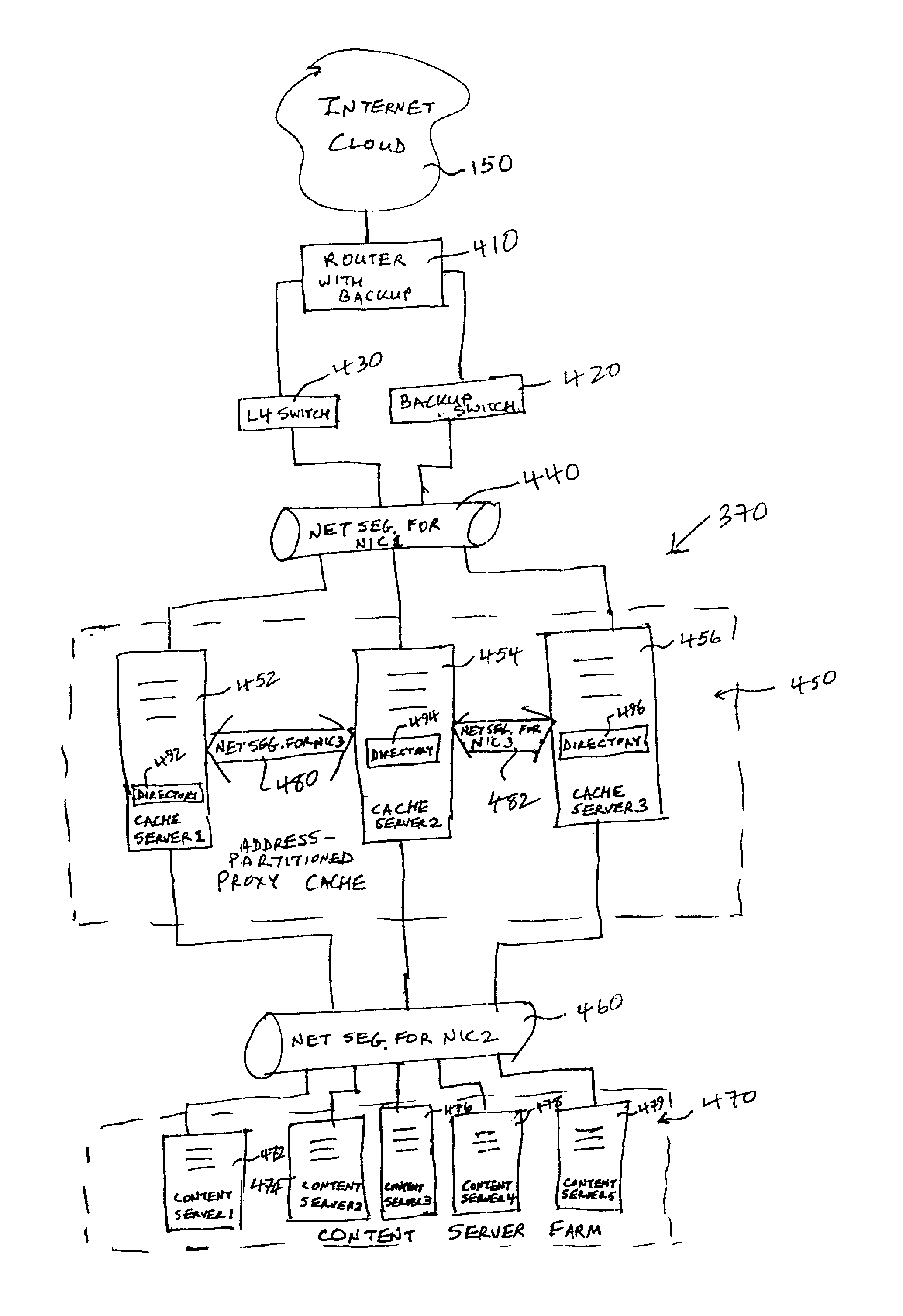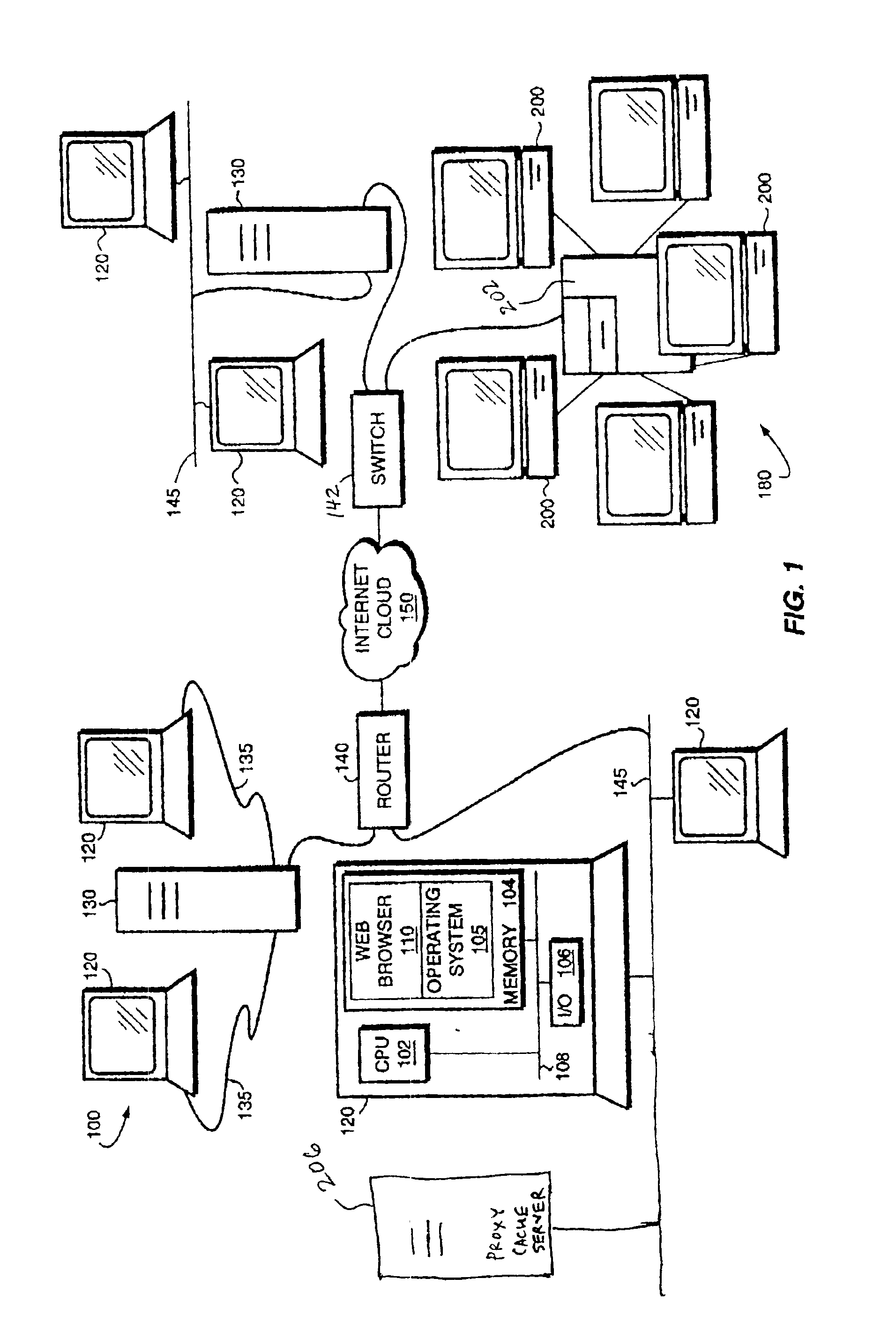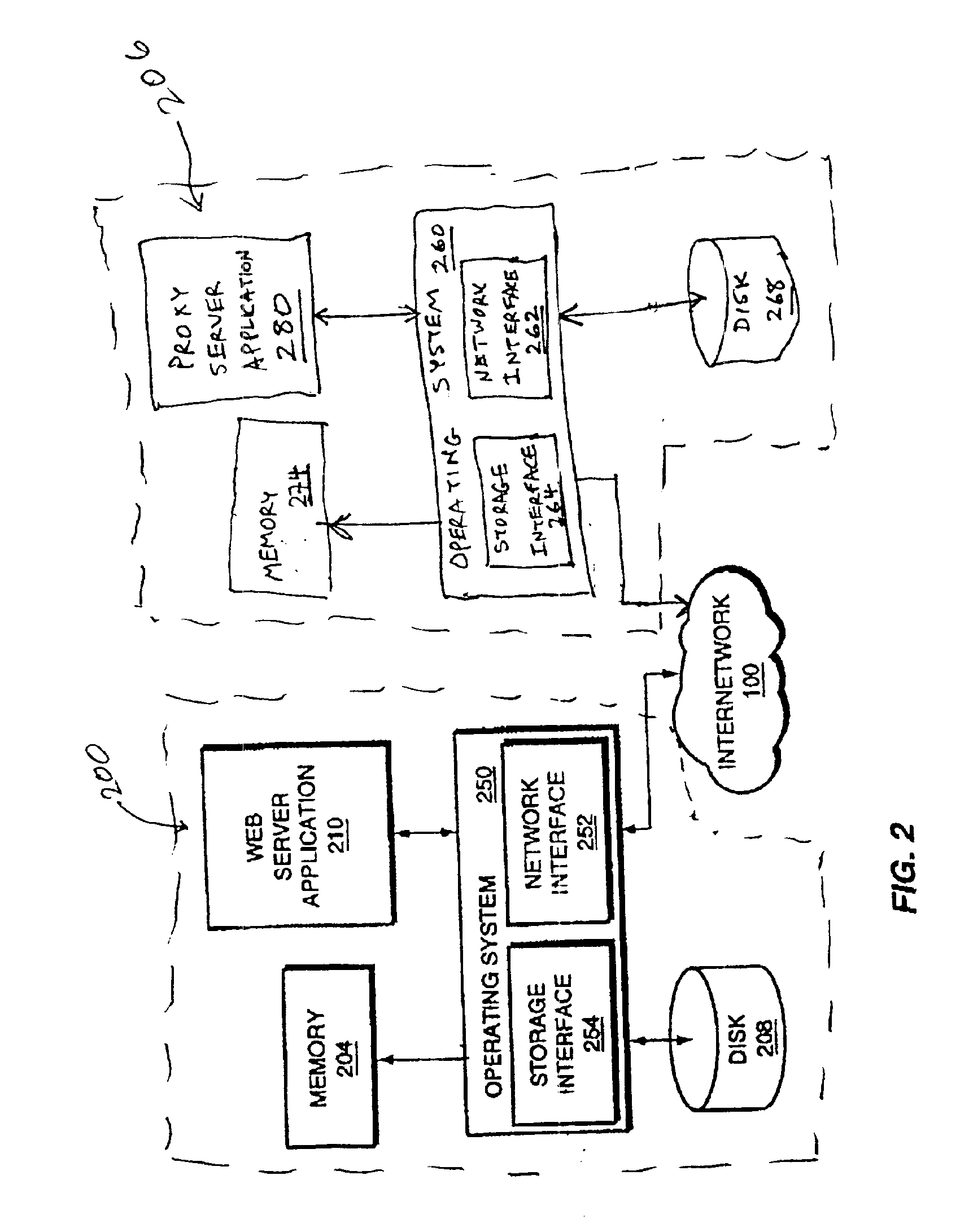System and method for partitioning address space in a proxy cache server cluster
a proxy cache and address space technology, applied in the field of communications network services, can solve the problems of file size may easily exceed 1 gigabyte of storage, and the network infrastructure of the service provider may become strained in trying to keep up with the increase of traffic, etc., and achieve the effect of clogging caches caused by over-filling of the entire address spa
- Summary
- Abstract
- Description
- Claims
- Application Information
AI Technical Summary
Benefits of technology
Problems solved by technology
Method used
Image
Examples
Embodiment Construction
FIG. 1 is a schematic block diagram of a computer internetwork 100 comprising a collection of network segments connected to a plurality of computers 120 and servers 130, 200, 202 and 206, as well router 140 and switch units 142. Each computer generally comprises a central processing unit (CPU) 102, a memory 104 and an input / output (I / O) unit 106 interconnected by a system bus 108. The memory 104 may comprise storage locations typically composed of random access memory (RAM) devices, which are addressable by the CPU 102 and I / O unit 106. An operating system 105, portions of which are typically resident in memory and executed by CPU, functionally organizes the computer by, inter alia, invoking network operations in support of application programs executing on the CPU. An example of such an application program is a web browser 110, such as Netscape Navigator® available from Netscape Communications Corporation.
The network segments may comprise local area networks 145 or intranets, point...
PUM
 Login to View More
Login to View More Abstract
Description
Claims
Application Information
 Login to View More
Login to View More - R&D
- Intellectual Property
- Life Sciences
- Materials
- Tech Scout
- Unparalleled Data Quality
- Higher Quality Content
- 60% Fewer Hallucinations
Browse by: Latest US Patents, China's latest patents, Technical Efficacy Thesaurus, Application Domain, Technology Topic, Popular Technical Reports.
© 2025 PatSnap. All rights reserved.Legal|Privacy policy|Modern Slavery Act Transparency Statement|Sitemap|About US| Contact US: help@patsnap.com



